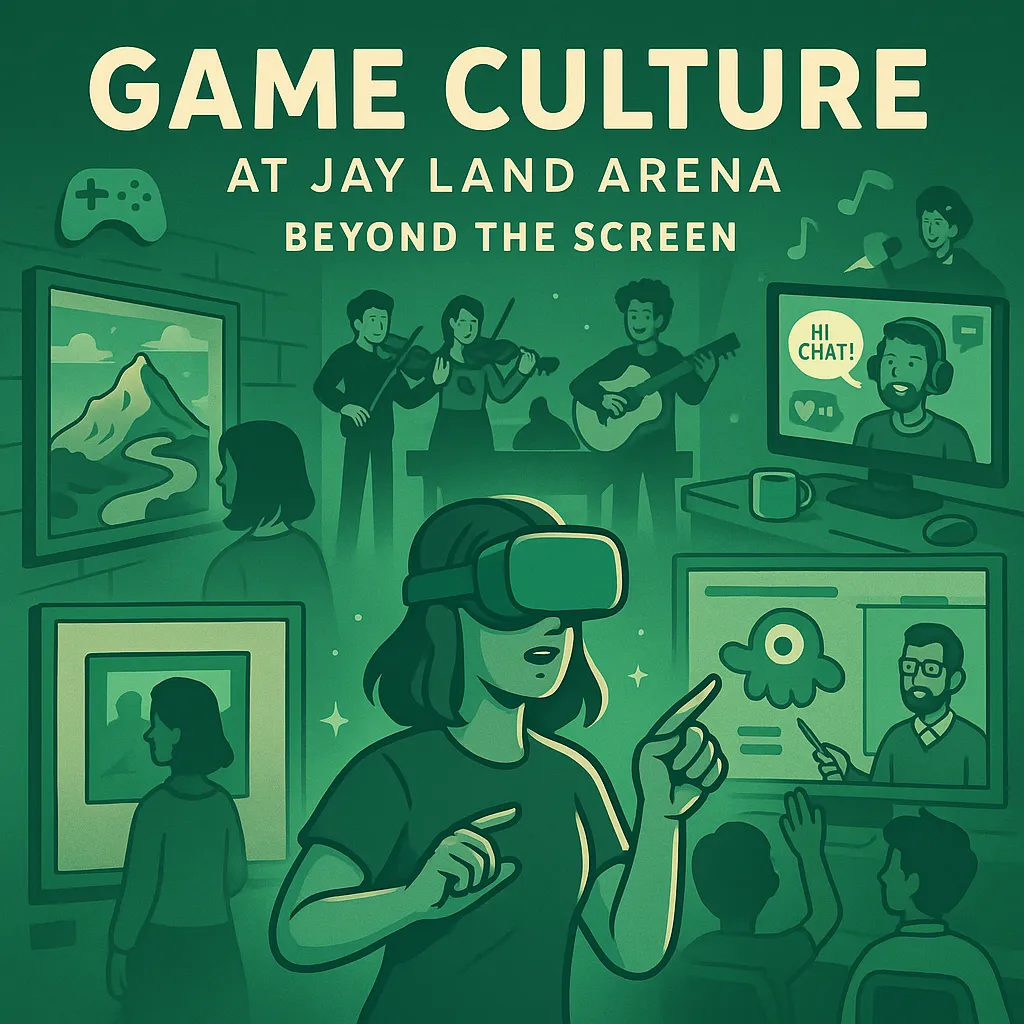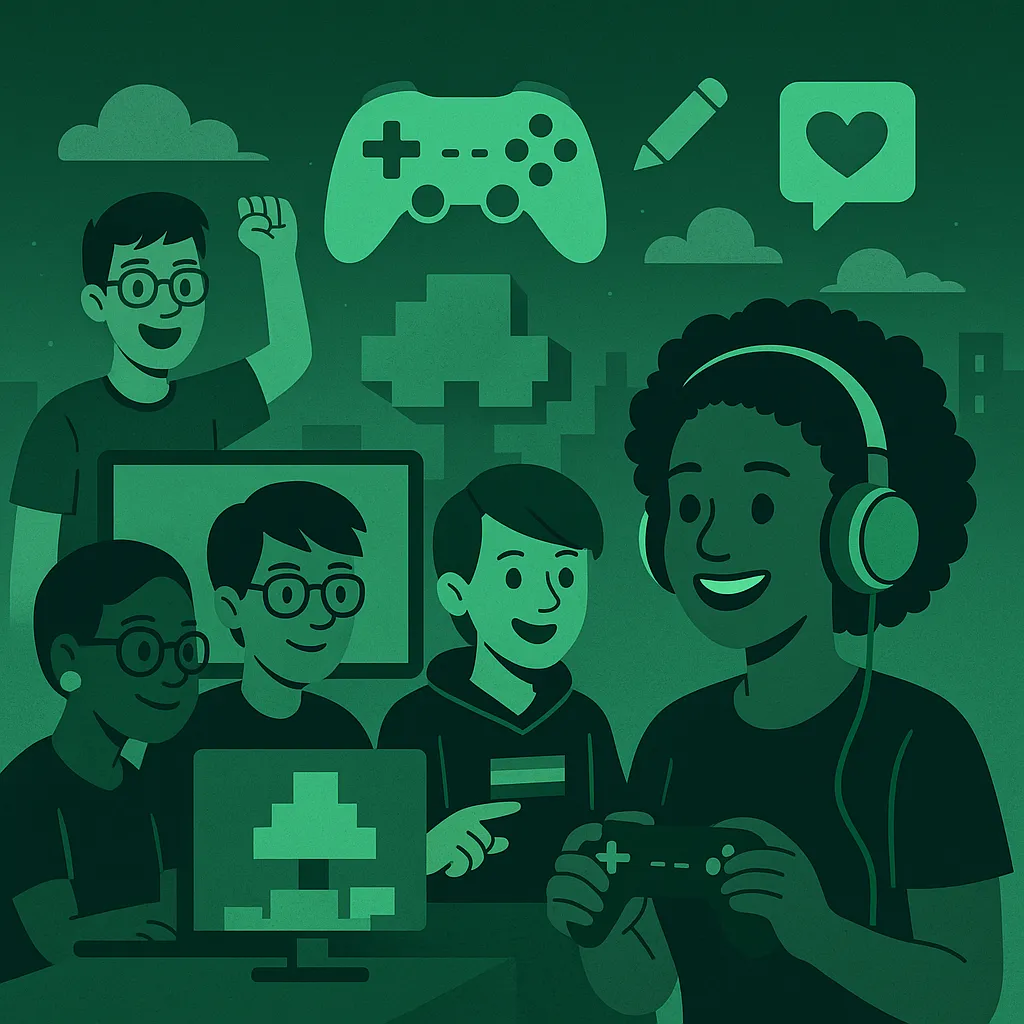Game Culture at Jayland Arena — Beyond the Screen
The Cultural Reach of Video Games
Let’s break down how games extend their impact beyond digital spaces and into the real world.

Games as Art and Design Icons
Once dismissed as mere entertainment, video games are now being showcased in institutions like the Museum of Modern Art. Titles such as Journey and Gris aren’t just games—they’re immersive artworks. Their use of color, pacing, and interactive storytelling rivals traditional mediums like cinema and sculpture.
The Sound of Gaming — Music That Sticks
Gaming music has matured into a powerful cultural element. Composers like Koji Kondo (Zelda) and Nobuo Uematsu (Final Fantasy) created soundtracks that have moved beyond consoles into concert halls. Events like Video Games Live draw thousands, proving that these melodies are etched into pop culture just as deeply as any film score.
Game Culture in the Public Eye
Viral titles like Fortnite and Pokémon Go are more than just digital hits—they’re proof of how game culture can take over mainstream attention. From celebrity crossovers to TikTok dance crazes, we’re seeing games become defining moments in pop media, affecting how people dress, talk, and interact offline.
Minecraft deserves a special mention. With over 300 million copies sold and limitless creative potential, it’s more than a game—it’s a global tool for education, art, and storytelling.

Gaming Communities and Player Identity
Gaming has built new social spaces that are reshaping how we connect.
Collaboration and Expression
From MMOs to sandbox builders, games push players to create, explore, and work together. Titles like Minecraft and Roblox reward cooperation and spark imagination, turning players into co-authors of their own worlds.
Inclusivity and Representation
Communities like Black Girl Gamers or LGBTQ+ guilds offer safe spaces for players often overlooked by mainstream games. These groups foster belonging and representation, even in the face of online harassment. Identity in gaming is no longer limited by avatars—it’s about real-world connection and validation.
How Games Influence Culture
| Cultural Area | Game Impact Example |
|---|---|
| Art | Journey, Gris featured in museum exhibitions |
| Music | Zelda concerts, Final Fantasy symphonies |
| Social Trends | Fortnite dances, Pokémon Go crowd events |
| Education | Minecraft in schools, logic games for students |
| Media Crossovers | Adaptations into movies, books, and streaming shows |
The Retro Revival — Why Pixel Art Is Back
Nostalgia is fueling a massive return to retro gaming. Younger generations, raised on sleek 3D graphics, are now embracing the charm of 8-bit and 16-bit aesthetics. This isn’t just about graphics—it’s about experience. Classic games like Super Mario Bros. and The Legend of Zelda offered tight mechanics and immediate gameplay, something modern games often complicate.
Platforms like TikTok and YouTube have reignited this trend by showcasing retro speedruns, console unboxings, and pixel-inspired game development. The revival isn’t stuck in the past—it’s reshaping modern game culture and inspiring new generations of indie creators.
The Psychology of Play — Real-World Benefits
Beyond the culture and the fandoms, gaming is proving itself as a tool for learning and development. Studies continue to highlight the cognitive benefits of video games, especially:
- Problem-solving and logic: Strategy and puzzle games require decision-making under pressure.
- Hand-eye coordination: Fast-paced gameplay improves reflexes and motor control.
- Teamwork and leadership: Multiplayer and co-op modes encourage collaboration and leadership skills.

Games like Portal, Overwatch, and Civilization VI demonstrate how engaging with game systems improves both short-term focus and long-term strategic thinking.
Even classrooms are taking note. Gamified learning platforms and educational games now help teachers boost student engagement in subjects like math, history, and coding.
Games as Global Storytellers
One of the most powerful elements of game culture is its ability to introduce players to cultures far from their own. From Japanese folklore in Ōkami to West African influences in Aurion: Legacy of the Kori-Odan, game narratives are increasingly rooted in regional myths, languages, and customs.
This globalization of game design leads to richer, more diverse storytelling—and a more informed and empathetic player base. As studios from Africa, Asia, Latin America, and the Middle East grow, so too does the cultural reach of the medium.
Where Traditional Media Meets Interactive Worlds
Gaming has entered a new relationship with traditional entertainment. We’re now seeing beloved titles adapted into movies, shows, and books—and vice versa.
- The Last of Us series on HBO drew both gamers and newcomers.
- Arcane, based on League of Legends, won awards for its animation and story depth.
- Novels and comics based on franchises like Mass Effect and Halo expand lore and deepen fan engagement.
This crossover isn’t a one-way street. Video games are also borrowing from cinema and literature in how they tell stories—through cinematography, branching dialogue, and environmental worldbuilding.
Join the Cultural Conversation at Jayland Arena
At Jayland Arena, we treat game culture as more than a topic—it’s a living, breathing community. Whether you’ve been gaming for decades or just discovered your first console, your perspective matters here.
We invite you to:
Submit content — Have insights, think pieces, or personal essays? Pitch them to our editorial team.
Share your stories — How did gaming shape your identity?
Join our culture hub — Discuss trends, nostalgia, and game symbolism.
At Jayland Arena, your stories help us document and celebrate the evolution of game culture across generations.
